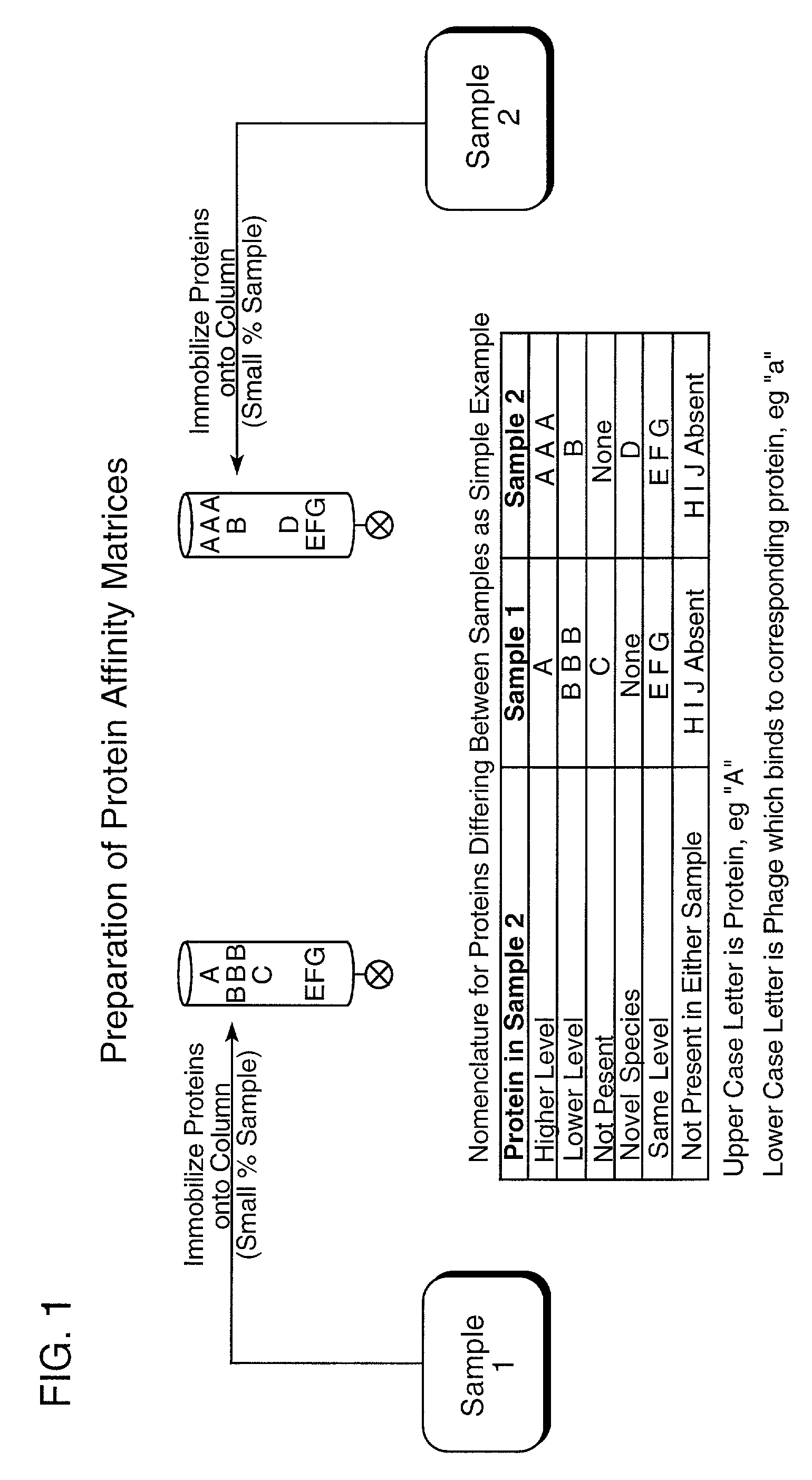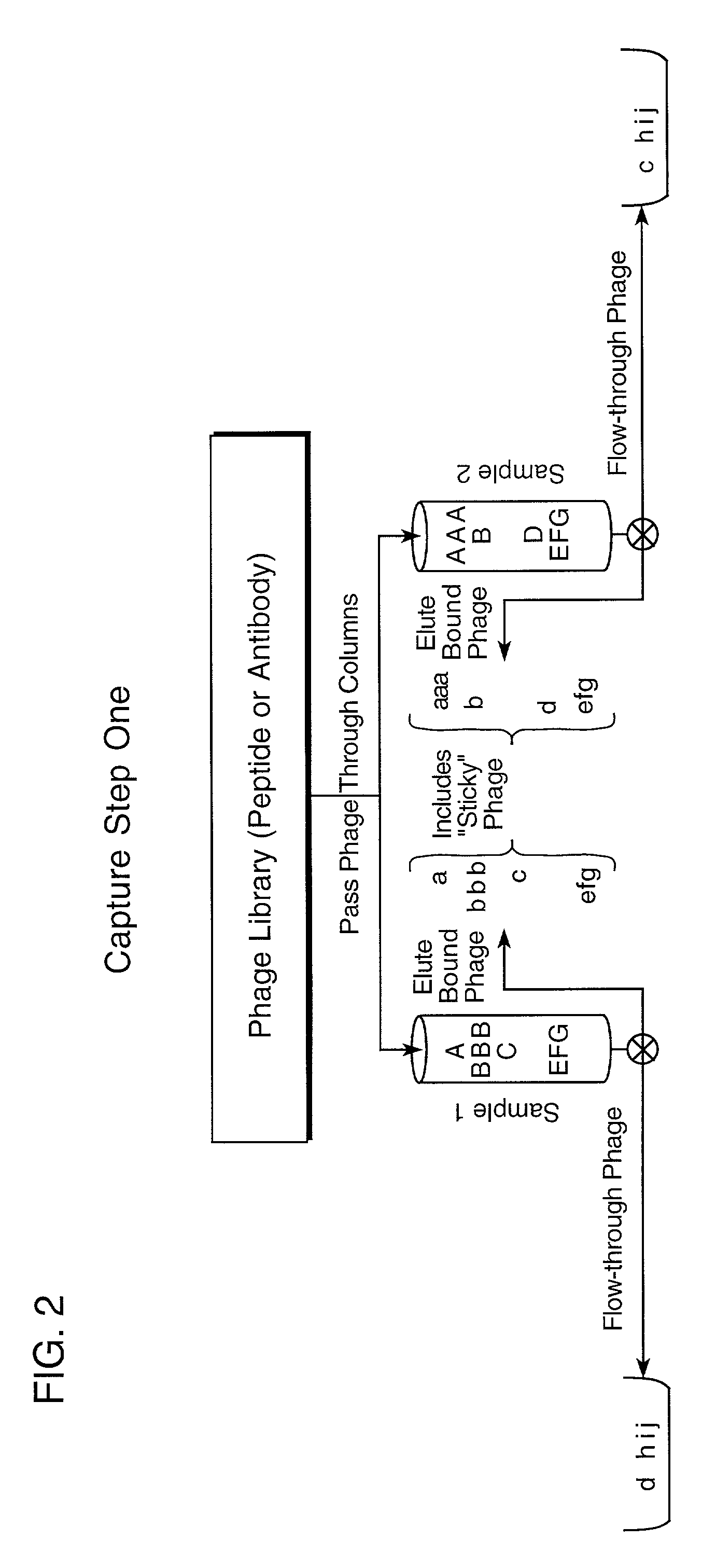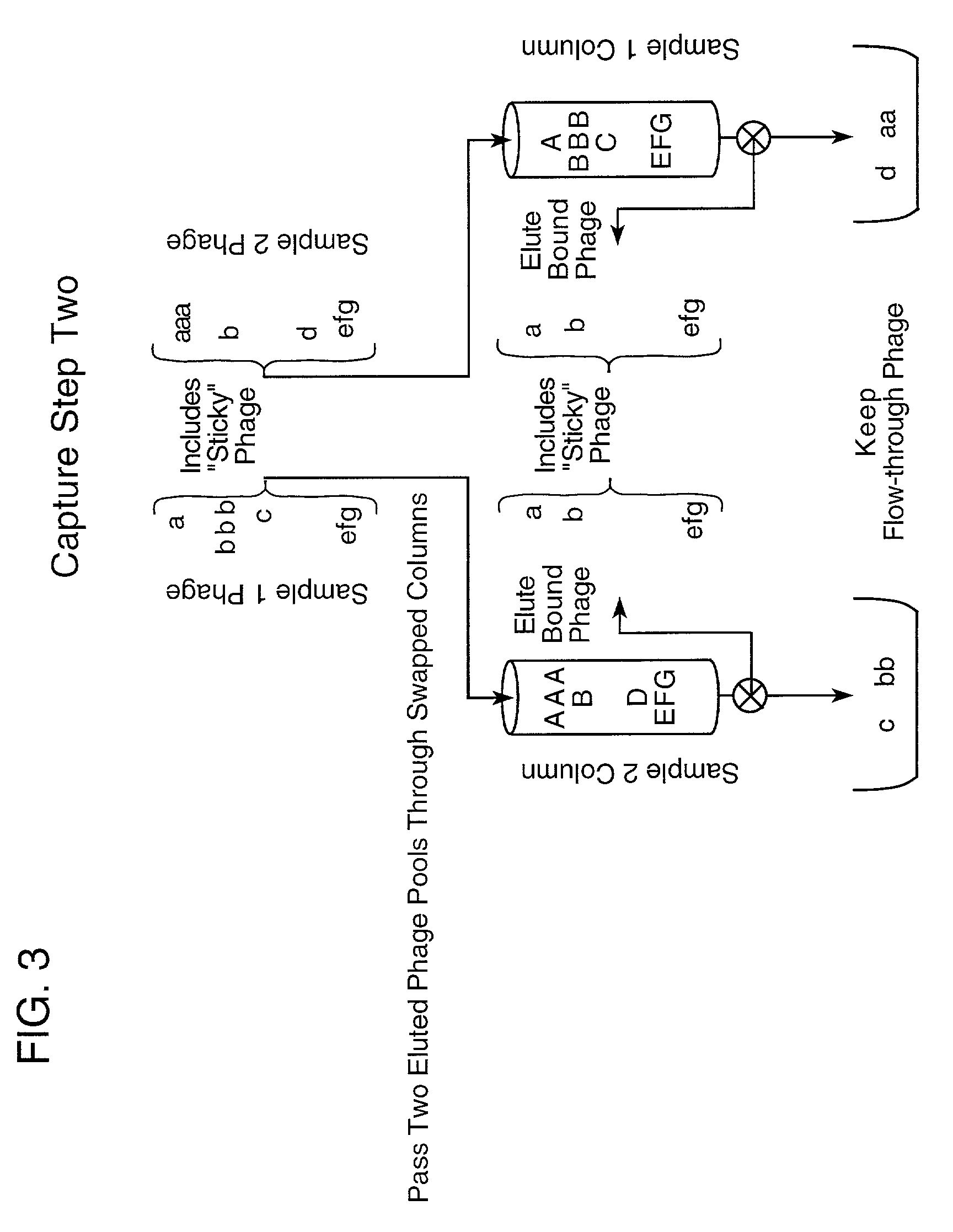Differential phage capture proteomics
a phage and proteomics technology, applied in the field of differential phage capture proteomics, can solve the problems of time-consuming and expensive methods for analyzing biomolecules, inefficiencies in detection, imaging, purification, and analysis, and the inability to select molecules of interest from large ensembles or repertoires
- Summary
- Abstract
- Description
- Claims
- Application Information
AI Technical Summary
Benefits of technology
Problems solved by technology
Method used
Image
Examples
example
Step I. Proteins Capture Phage Against Proteins Differing Between Samples
[0057](a) Preparation of Protein Affinity Matrices for Two Samples (FIG. 1).
[0058]Sample Collection. Samples of human CSF are collected from two different individuals by lumbar puncture in a sterile container. The samples should immediately be placed in an ice bath and brought to the laboratory for analysis. On arrival in the laboratory, the CSF samples should be centrifuged to remove circulating cells at 2,000 g for 10 minutes at 5° C. The samples can be either processed immediately or stored at −7° C. until analysis (Sanchez, J. C. and Hochstrasser, D. F., “Proteome Analysis Protocols” in Methods in Molecular Biology, Vol. 112, Humana Press, Totowa, N.J. (1999)).
[0059]Sample Preparation. To dissociate bound proteins and other species, and to minimize protein interactions, aliquots of the samples (100 μl) are made up to a final concentration of 3M guanidine HCl and 0.2M formic acid, and incubated in ice for 60...
PUM
| Property | Measurement | Unit |
|---|---|---|
| volume | aaaaa | aaaaa |
| flow rate | aaaaa | aaaaa |
| pH | aaaaa | aaaaa |
Abstract
Description
Claims
Application Information
 Login to View More
Login to View More - R&D
- Intellectual Property
- Life Sciences
- Materials
- Tech Scout
- Unparalleled Data Quality
- Higher Quality Content
- 60% Fewer Hallucinations
Browse by: Latest US Patents, China's latest patents, Technical Efficacy Thesaurus, Application Domain, Technology Topic, Popular Technical Reports.
© 2025 PatSnap. All rights reserved.Legal|Privacy policy|Modern Slavery Act Transparency Statement|Sitemap|About US| Contact US: help@patsnap.com



